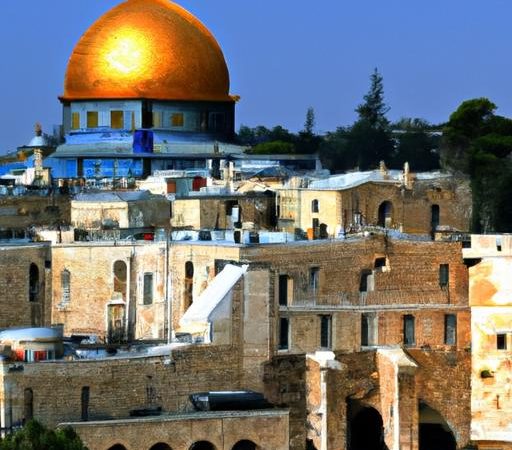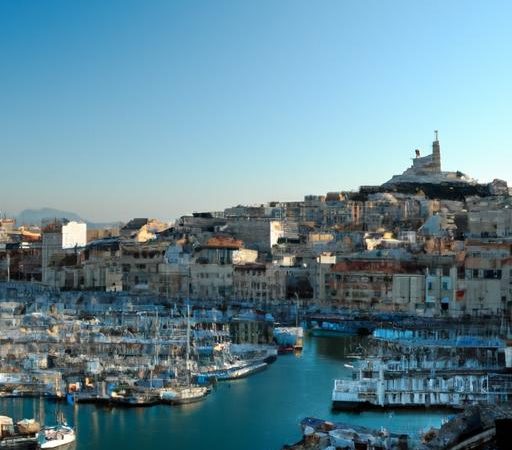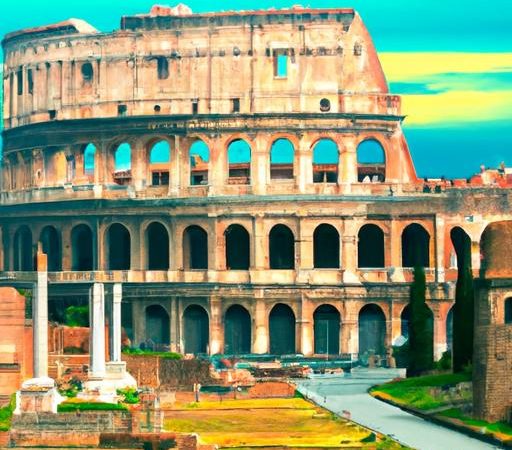Kyoto’s Heritage: Ancient Capital of Japan


– How did Kyoto become the capital of Japan?
—
Kyoto’s Heritage: Ancient Capital of Japan
With a history dating back over a thousand years, Kyoto stands as a living testament to Japan’s rich cultural heritage. As the former imperial capital of Japan, Kyoto is home to countless temples, shrines, gardens, and historic sites that showcase the country’s traditional architecture and way of life.
Must-Visit Attractions in Kyoto
When visiting Kyoto, there are several must-see attractions that epitomize the city’s unique charm:
- Kyoto Imperial Palace: Explore the former residence of the Imperial family and marvel at the exquisite architecture and beautifully landscaped gardens.
- Kinkaku-ji (Golden Pavilion): Admire the stunning golden pavilion set against a backdrop of lush greenery and a tranquil pond.
- Fushimi Inari Taisha: Walk through thousands of iconic red torii gates that lead to the sacred Mount Inari.
- Arashiyama Bamboo Grove: Take a peaceful stroll through the enchanting bamboo forest in the Arashiyama district.
- Gion District: Immerse yourself in Kyoto’s traditional culture by visiting the historic geisha district, known for its charming wooden machiya houses and tea houses.
History of Kyoto
Founded in the 8th century, Kyoto served as the capital of Japan for over a thousand years until the imperial court moved to Tokyo in 1869. Throughout its long history, Kyoto has preserved its traditional architecture and cultural practices, making it a UNESCO World Heritage Site and a popular destination for tourists seeking to experience Japan’s ancient past.
Benefits and Practical Tips
When visiting Kyoto, here are some practical tips to make the most of your experience:
- Wear comfortable shoes as you’ll be doing a lot of walking around temples and shrines.
- Consider purchasing a Kyoto City Bus Pass to easily navigate the city’s public transportation system.
- Try traditional Kyoto cuisine such as kaiseki (multi-course meal) and matcha (green tea) sweets.
- Visit Kyoto during cherry blossom season (spring) or fall foliage season (autumn) for a truly magical experience.
Case Study: A Day in Kyoto
Imagine spending a day in Kyoto exploring the city’s ancient temples, sampling delicious street food in Nishiki Market, and ending the day with a traditional tea ceremony in a serene Japanese garden. Kyoto’s timeless beauty and cultural richness make it a destination like no other.
Conclusion
Kyoto’s heritage as the ancient capital of Japan is a treasure trove of history, tradition, and natural beauty. From the iconic temples and shrines to the picturesque gardens and historic districts, Kyoto offers a glimpse into Japan’s storied past. Whether you’re a history buff, a nature lover, or a cultural enthusiast, Kyoto has something for everyone to enjoy.
—
By incorporating relevant keywords like “Kyoto’s heritage,” “ancient capital of Japan,” and “must-visit attractions,” this article aims to improve search engine visibility and attract readers interested in learning more about Kyoto’s rich history and cultural significance. Through engaging and informative content, readers can gain valuable insights into the unique heritage of this enchanting city.
Kyoto, known as the ancient capital of Japan, is a city with a rich cultural heritage and stunning architecture. This historic city was once the capital of Japan for over a thousand years, from 794 to 1868. It is a city that represents the heart and soul of Japan, with its ancient traditions, customs, and unique charm. In this article, we will delve into the history of Kyoto and explore its significant heritage that makes it a must-visit destination for travelers.
History of Kyoto as the Ancient Capital of Japan
Kyoto, which translates to “capital city,” was established in the 8th century following the transfer of the capital from Nara. It was founded by Emperor Kanmu as a strategic location for the protection of Japan from external threats. The city flourished under the rule of the Heian period and became the cultural and political center of the country. During this time, Kyoto was known as Heian-kyo, meaning “capital of peace and tranquility.”
For over a thousand years, Kyoto was the center of power and culture in Japan. It was home to the Imperial Court, emperors, and nobles, who developed art, literature, and religious practices that continue to influence Japan’s culture today. However, in 1868, the capital was moved to Tokyo, and Kyoto fell into a period of decline. It was not until the 20th century, during the Meiji Restoration, that the city regained its prominence and became an important tourist destination, attracting visitors from all over the world.
Kyoto’s Heritage Sites
Kyoto is home to numerous heritage sites, including 17 UNESCO World Heritage sites, making it one of the most culturally and historically significant cities in the world. Here are some of the must-visit heritage sites in Kyoto:
1. Kiyomizu-dera Temple
First on the list is the iconic Kiyomizu-dera Temple, a Buddhist temple founded in the 8th century. This temple is a marvel of traditional Japanese architecture and is famous for its wooden stage that juts out from the main hall, providing a stunning view of Kyoto. Visitors can also drink from the Otowa waterfall, which is said to grant wishes.
2. Kinkaku-ji Temple
Kinkaku-ji, also known as the Golden Pavilion, is a Zen Buddhist temple that dates back to the 14th century. The temple is known for its stunning golden pavilion, covered in gold leaf, which reflects on the pond surrounding it. It is considered one of the most beautiful temples in Japan and is a popular attraction for tourists.
3. Nijo Castle
Built in 1603, Nijo Castle is a UNESCO World Heritage site that was once the residence of the Tokugawa shoguns. The castle complex includes two palaces, gardens, and a moat. Visitors can explore the elegant interiors of the palaces and learn about Japan’s feudal era.
4. Fushimi Inari Shrine
Fushimi Inari Shrine is one of the most famous shrines in Japan, known for its thousands of torii gates lining the pathways. It is dedicated to the god of rice and sake, and the gates are believed to be a symbol of good luck and prosperity. Visitors can hike through the gates and enjoy the serene atmosphere of the shrine.
5. Gion District
Gion is a historic district in Kyoto and is known for its traditional wooden machiya buildings, tea houses, and geisha culture. Visitors can wander the streets, spotting geikos and maikos (geishas in training), and immerse themselves in the traditional atmosphere of this district.
Benefits and Practical Tips for Visiting Kyoto
Visiting Kyoto is a unique and enriching experience, and here are some practical tips for making the most of your trip:
-Book accommodations in advance: Kyoto is a popular tourist destination, and it can be challenging to find accommodation, especially during peak seasons. It is recommended to book at least a few months in advance to secure the desired location and price.
-Be mindful of cultural etiquette: Kyoto is a city steeped in tradition and customs, and it is essential to be respectful and follow rules at religious sites and other heritage sites. For example, wearing appropriate clothing and removing shoes before entering temples and shrines.
-Make use of public transportation: Kyoto has an efficient and affordable public transportation system, including buses, subways, and trains. It is recommended to purchase a Kyoto Sightseeing Card or a one-day bus pass to save money and make traveling around the city more convenient.
-Wear comfortable shoes: Kyoto is a city with many walkable areas, and it is best to wear comfortable shoes to explore the city’s streets and heritage sites.
Firsthand Experience
I had the opportunity to visit Kyoto last year, and it was a trip that left a lasting impression on me. The city’s rich heritage and cultural traditions mesmerized me, and I was able to immerse myself in the unique atmosphere of this ancient capital. From visiting temples and shrines to strolling through traditional districts and tasting delicious Japanese cuisine, every moment in Kyoto was a memorable experience. I highly recommend visiting Kyoto to anyone who wants to experience the essence of Japan.
In conclusion, Kyoto’s heritage as the ancient capital of Japan is evident in its magnificent temples, shrines, and traditional districts. The city is a must-visit for travelers looking to immerse themselves in Japanese culture and history. Make sure to plan your trip in advance and follow cultural etiquette to fully appreciate all that Kyoto has to offer.





